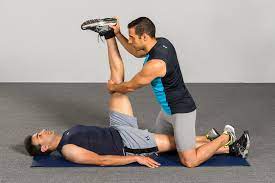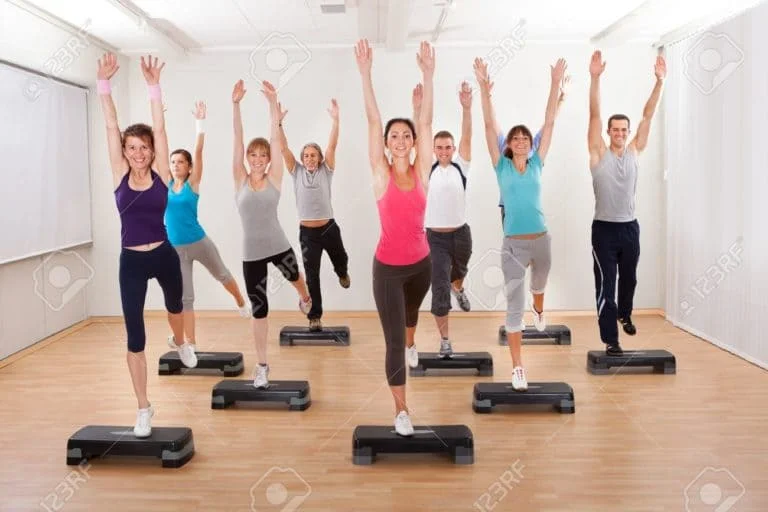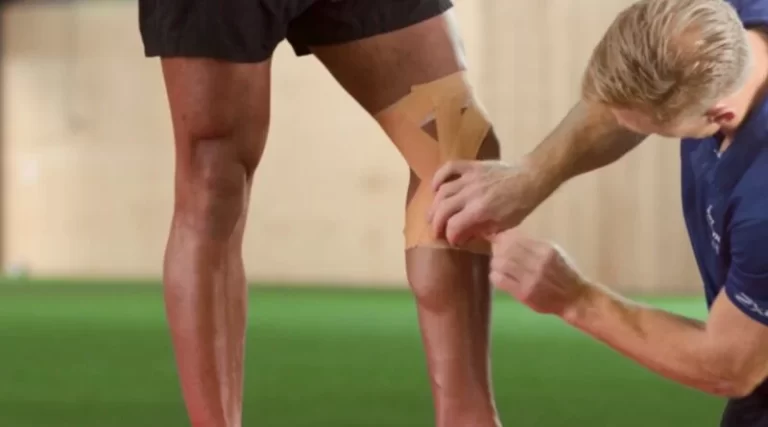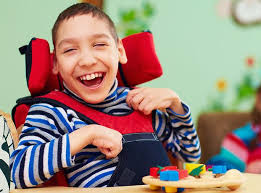Carr and Shepherd’s approach
Table of Contents
What is the Carr and Shepherd approach?
Neurologically challenged patients are treated using the motor learning strategy created by Carr and Shepherd. This strategy is founded on the idea that, in the wake of brain or spinal cord damage, the brain is dynamic and capable of reorganization and adaptability. In order to achieve the best injury healing possible, the Carr and Shepherd approach promotes patient engagement, making treatment task- and functional-oriented. As an illustration, stair mobility, bath entry and exit, and making a cup of tea.
Principles of Carr and Shepherd approach:
According to the Carr and Shepherd method, rehabilitation should begin as soon as feasible after an accident. Prevention of non-use of the affected side, muscle weakening, loss of endurance, and decline in mental and perceptual abilities is made easier by prompt treatment. Early therapy also encourages the patient’s motor and cognitive learning capacities.
The following are some of the Carr and Shepherd method’s guiding principles:
- Task-oriented therapy is used.
- Importance of motor function, as well as cognitive and perceptual function
- movement on the side that is injured
- Encourage the patient to think about the task and learn from treatment by using verbal and visual cues.
- Encourage against compensatory action
- Avoid shortening your muscles since this causes spasticity and irregular movement.
- Patients who actively participate in their care perform exercises between appointments and keep track of their progress.
- The setting is lively and functional, with treatment tailored to daily activities.
Benefits of Carr and Shepherd’s approach:
According to the Carr and Shepherd method, patients will learn more quickly in situations that are meaningful and familiar to them on a daily basis. The recovery of previously stored functions will be facilitated by this type of environment. This kind of therapy will be helpful in:
- Boost your muscular strength
- Lengthen tense muscles to avoid soft tissue contractures.
- Boost cognitive performance
- Reclaim your motor skills
- Learn the afflicted side’s function again
- Enhance everyday behaviors including standing up from a sitting position, walking, reaching, and grasping. Enhance the sequence of everyday activities to accomplish a certain goal.
- Boost your posture
- Boost your independence
The Carr and Shepherd method also emphasizes the significance of cues—verbal and visual—as well as instructions and justifications that encourage patients to consider their options. Additionally, this cognitive techniques aid in re-imprinting previously-stored abilities.
How do you use Carr and Shepherd’s approach?
The Carr and Shepherd method is frequently used by specialized neurological physiotherapists to treat patients with a variety of neurological diseases. This approach is used in conjunction with other types of treatment, depending on the individual’s symptoms and goals. This allows the physiotherapists to maximize the potential of every patient we treat. The independence with everyday duties and quality of life will improve throughout physiotherapy utilizing the Carr and Shepherd technique.
Currently, the Carr and Shepherd method is utilized to treat a variety of neurological diseases, including:
- Cerebral Palsy
- Head Injury
- Parkinson’s disease
- Stroke
- Spinal Cord Injury
By actively integrating the patient in functional movements in a setting that has meaning for them, Carr and Shepherd’s physiotherapy will aid in the improvement of motor and cognitive function. This method will consequently greatly simplify daily tasks and increase independence.
Procedure for Motor Relearning Program
Carr and Shepherd:
‘MOTOR RELEARNING PROGRAM:
•It is developed by Australian physiotherapists: Janet Carr and Roberta Shepherd
•It is a task-oriented strategy that focuses on relearning daily routines in order to improve motor control.
•It is heavily influenced by kinesiology ideas that place an emphasis on a dispersed motor control model as opposed to a hierarchal one.
THEORETICAL UNDERPINNINGS OF MRP
- Postural adjustments are anticipatory and on-going
The context or regulatory conditions in the environment (interactions between the performer and the environment) are what cause motor behaviors to evolve. - Deficits in generating appropriate models of action are the primary problem following stroke, not spasticity or pathologic movement strategies.
OBSTACLES TO EFFICIENT MOVEMENT: MOVE ATTEMPT.
- Diminished soft tissue extensibility.
- Impaired balance.
- Postural insecurity and resultant fixation patterns
- Specific muscle weakness-> Compensatory movement strategy-> repeated practice of the compensatory strategy-> learned use of the compensatory strategy
BASIC DESCRIPTION AND GUIDELINES
- The program is composed of guidelines for evaluating and improving 7 daily functions
- Upper limb function
- Oro-facial function
- Sitting up from supine;
- Sitting;
- Standing up and sitting down;
- Standing;
- Walking
BASIC DESCRIPTION AND GUIDELINES
A description of the typical activity (the main elements of movement) appears in each segment.
- It’s not required to fully understand one area before moving on to another.
- There is no plan to go on to the next session, and it doesn’t matter what order the portions are in.
- The patient needs to be allowed to make mistakes and must constantly be actively engaged in the activity (without resistance).
Intervention: FOUR STEPS OF THE MRP
STEP 1: ANALYSIS OF TASK
STEP 2: PRACTICE OF MISSING COMPONENTS
STEP 3: PRACTICE OF TASKS
STEP 4: TRANSFERENCE OF LEARNING
Step 1: ANALYSIS OF TASK
- Monitoring the patient as they carry out (or plan to carry out) the activity
NOTE THE FOLLOWING:
- Any missing components
- Inaccurate timing of movement pattern components
- Lack of particular muscle activity
- The existence of any irrational or excessive muscular activity
- Compensatory motor behavior
•Comparison
•Analysis
STEPS 2 and 3: PRACTICE IDENTIFYING MISSING TASKS AND COMPONENTS
- Practice at peak performance for at least 30–60 minutes or more, or twice daily.
Steps 2 and 3 are overlapping. Step 3 mainly focuses on the transition from the cognitive to the automatic phases of learning.
IMPORTANT CONSIDERATIONS FOR MISSING COMPONENTS AND TASKS DURING PRACTICE
Motor tasks are either practiced entirely or broken down into components. The full activity is then practiced right after each component is practiced.
•Techniques principally comprise of:•Verbal and visual feedback (explanation and demonstration)
Instructions: brief and concise
Passive movement during a demonstration should not continue for more than one or two repetitions.
Manual guidance: passive or geographical and temporal constraints (physical restrictions).
•Body alignment should be monitored consistently
IMPORTANT CONSIDERATIONS FOR MISSING COMPONENTS AND TASKS DURING PRACTICE
Methods of progression
- Acceptable progression strategies:
- Reduced manual direction and input;
- Altered speed
- More in variety/complexity
Inappropriate ways of progression include:
- Performing motor skills in a neurodevelopmental sequence;
- Passive ROM exercise to resistive workouts;
- Parallel bars to quad cane;
- Wide to a small base of support; and
- Rolling over before the seated balance.
Step 4: TRANSFERENCE OF LEARNING
- Possibility of contextual practice
- Consistency of practice and encouraging feedback
- Scheduling of self-monitored practice
- Structure and stimulating learning environment
EQUIPMENT
The things that can be employed as the jobs’ ordinarily functioning regulatory conditions
- Unneeded equipment
- Parallel bars
- Splints or braces that maintain dorsiflexion of the ankle
EFFECTIVENESS
Relies on the therapist’s understanding of motor control, biomechanics, and problem-solving skills.
FAQs:
What is the neurorehabilitation approach?
A medically supervised program called neurological rehabilitation (rehab) is created for persons who have diseases, injuries, or problems of the nervous system. Neurological therapy typically helps patients feel better overall, work better, and suffer fewer symptoms.
What is the difference between Bobath and Carr and Shepherd?
By making motions simpler to complete, bobath physiotherapy will normalize tone and assist you in regaining motor control. Using a task-specific approach to treatment and promoting active participation all throughout the rehabilitation process, the Carr and Shepherd approach enhances functional ability.
What are the three theories of motor learning?
According to established ideas, there are three main stages of motor learning: cognitive, associative, and autonomous.
What is the theory of motor relearning?
The Australian physiotherapists Janet Carr and Roberta Shepherd created the Motor Relearning Programme (MRP), a method of therapy. It is a movement control improvement strategy that is task-oriented and emphasizes relearning daily actions. It is heavily based on kinesiology notions.
Who is the father of motor learning?
Franklin Henry, the pioneer of motor behavior, proposed the memory drum idea in the 1960s. Kinesiology’s subdiscipline of motor behavior.







